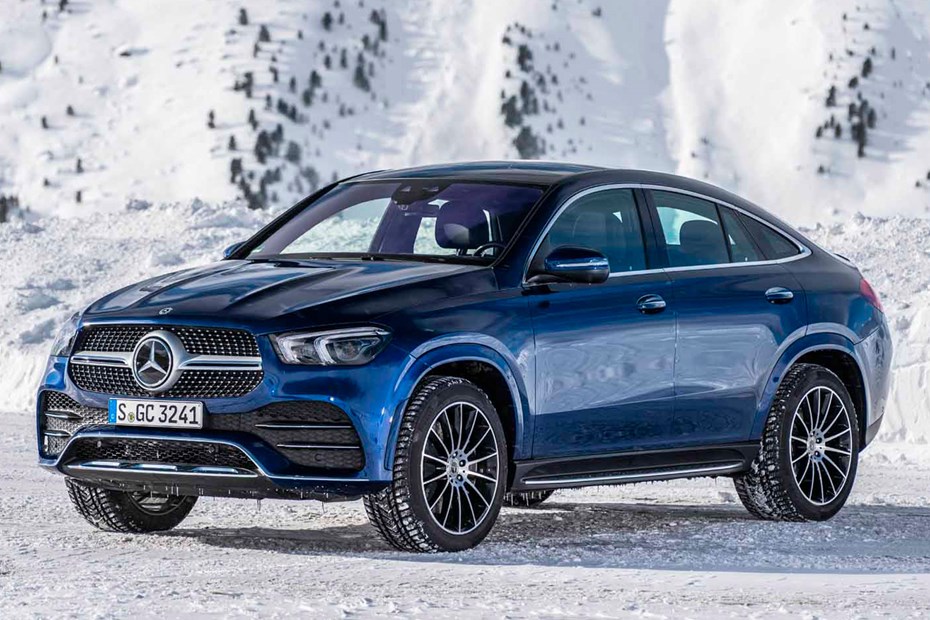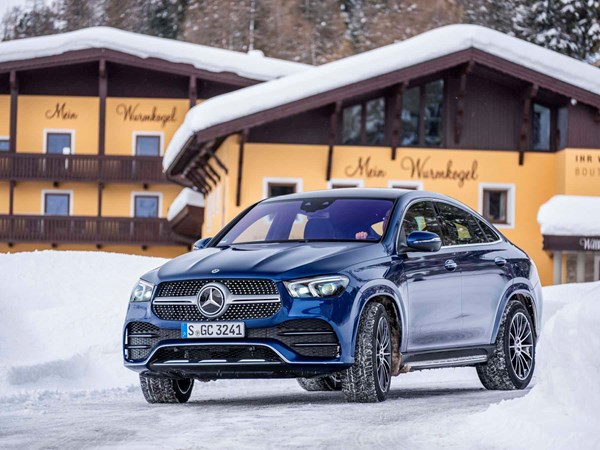
Mercedes-Benz GLE Coupe engines, drive and performance

- 3.0-litre diesel six-cylinder in two forms
- Clever diesel hybrid has good electric range
- Rapid 53 uses sophisticated mild-hybrid tech
The first two GLE Coupes – both expected to arrive in the UK in the summer of 2020 – are the 350de hybrid and the AMG-powered 53.
The hybrid is a 2.0-litre four-cylinder turbodiesel, with a big battery under the boot and an electric motor integrated into the transmission. The combined system output is 320hp and 670Nm of torque – big numbers, providing handy performance, despite the considerable heft of the car.
The AMG has an inline six-cylinder turbocharged petrol engine, aided by a 48-volt electrical system. A starter-generator built into the engine block performs various functions, including capturing surplus braking energy and storing it in an extra battery, ready to be used to help the engine or power ancillary functions. It really is very slick; only by very close observaton of the instruments will you know whether you’re running on petrol or electricity or coasting. The engine makes 435hp and 520Nm of pulling power: this isn’t one of AMG’s track-ready rocketships, but it’s excellent on the road.

The 350 and 400 d are the sort of diesel sixes that Mercedes has excelled at for years. Respectively, they make 272hp and 600Nm, or 330hp and 670Nm. Both will make very light work of hills, loads and sustained high speeds.
Handling
- Accurate, well-weighted steering
- Ride quality varies between models
- Good brakes
Here’s where the biggest differences are found.
The AMG has different suspension from other GLE Coupes, featuring electro-mechanical anti-roll bars that stop the car rolling through corners. It’s very effective, and not at the expense of comfort.
The others all use Merc’s Airmatic air suspension, which generally makes a good job of absorbing bumps and pothole impacts, while keeping the car in good shape during cornering. It can raise or lower the car for off-roading, too.

The exception is the 350 de plug-in hybrid. It still has Airmatic suspension, but uses a different rear axle arrangement, allowing the hybrid battery to sit under the boot rather than in it. The intention is good – it means there’s no reduction in boot space – but the result is inferior ride quality. It’s not rough or crude, but it just can’t cope with the extra 400kg of hybrid hardware, most of it located towards the back of the car. All too often, even on good road surfaces, the 350 de feels unsettled, like a boat. Not a problem if you only ever drive around town, but this is surely not a car you’d buy just for driving around town.
The hybrid also has a different feel to its braking, because much of the slowing down is done using the regenerative system rather than the mechanical brakes. It works very well, and doesn’t take much getting used to. The level of regen can be set by the driver, like on electric cars such as the Nissan Leaf.



